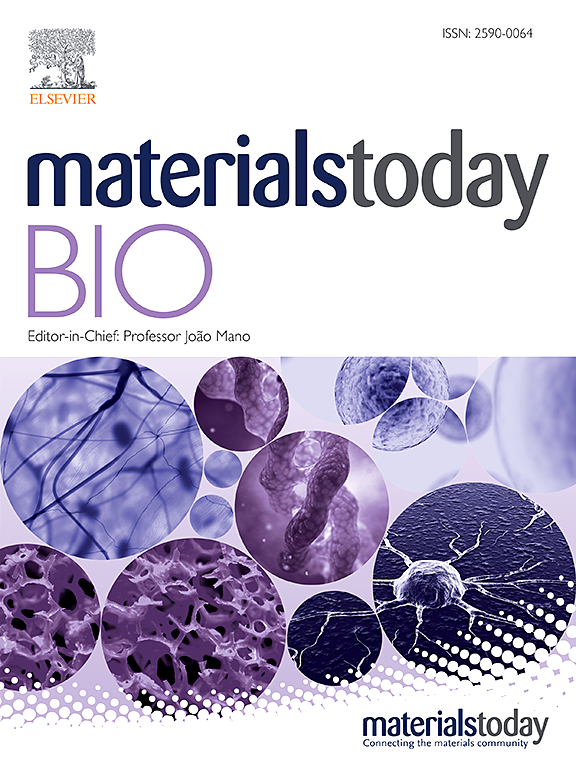Dual-sided centripetal microgrooved poly (D,L-lactide-co-caprolactone) disk encased in immune-regulating hydrogels for enhanced bone regeneration
IF 8.7
1区 医学
Q1 ENGINEERING, BIOMEDICAL
引用次数: 0
Abstract
Well-designed artificial scaffolds are urgently needed due to the limited self-repair capacity of bone, which hampers effective regeneration in critical defects. Optimal scaffolds must provide physical guidance to recruit cells and immune regulation to improve the regenerative microenvironment. This study presents a novel scaffold composed of dual-sided centripetal microgrooved poly(D,L-lactide-co-caprolactone) (PLCL) film combined with a dynamic hydrogel containing prednisolone (PLS)-loaded Prussian blue nanoparticles (PB@PLS). The microgrooves on the surface of the PLCL film were imprinted using a micropatterned polydimethylsiloxane (PDMS) template. Following aminolysis, the PLCL film was covalently grafted with the EM-7 peptide via glutaraldehyde. Functional group analysis, surface morphology and hydrophilicity were evaluated using X-ray photoelectron spectroscopy (XPS), scanning electron microscopy (SEM), and an optical contact angle measuring instrument, respectively. Bone regeneration-related cells (e.g., bone marrow mesenchymal stem cells, macrophages, Schwann cells, and endothelial cells) cultured on PLCL films tended to align along the stripes and migrate from the periphery toward the center region in vitro. Subsequently, the PLCL film was encapsulated in an immune-regulating hydrogel synthesized from thiol-modified gelatin and Cu2+ in the presence of PB@PLS nanoparticles, which demonstrated excellent antioxidant properties. This scaffold significantly accelerated critical-sized bone regeneration, as evidenced by an increase in the volume of newly formed bone and histological images in vivo. This innovative approach holds substantial promise for clinical applications in bone regeneration and broader tissue repair.

求助全文
约1分钟内获得全文
求助全文
来源期刊

Materials Today Bio
Multiple-
CiteScore
8.30
自引率
4.90%
发文量
303
审稿时长
30 days
期刊介绍:
Materials Today Bio is a multidisciplinary journal that specializes in the intersection between biology and materials science, chemistry, physics, engineering, and medicine. It covers various aspects such as the design and assembly of new structures, their interaction with biological systems, functionalization, bioimaging, therapies, and diagnostics in healthcare. The journal aims to showcase the most significant advancements and discoveries in this field. As part of the Materials Today family, Materials Today Bio provides rigorous peer review, quick decision-making, and high visibility for authors. It is indexed in Scopus, PubMed Central, Emerging Sources, Citation Index (ESCI), and Directory of Open Access Journals (DOAJ).
 求助内容:
求助内容: 应助结果提醒方式:
应助结果提醒方式:


